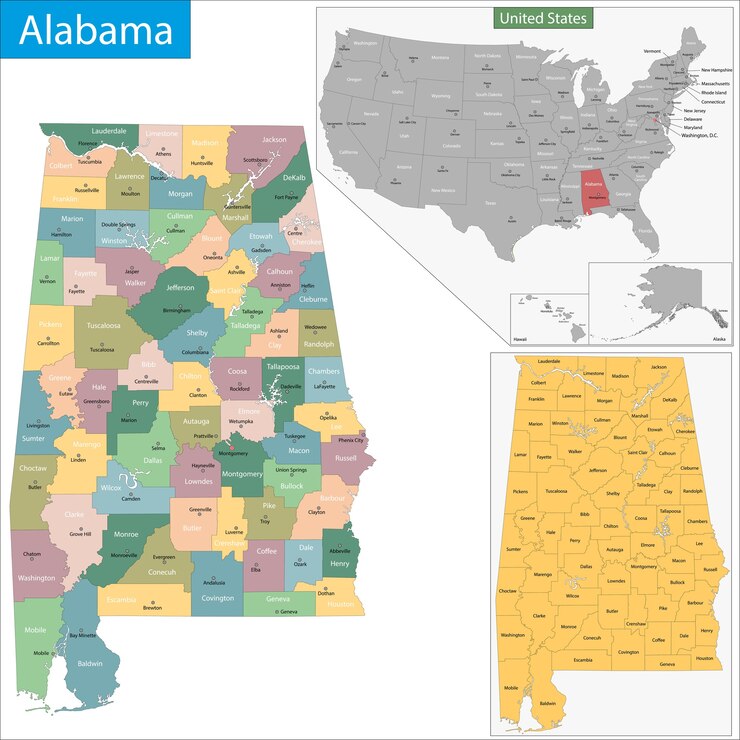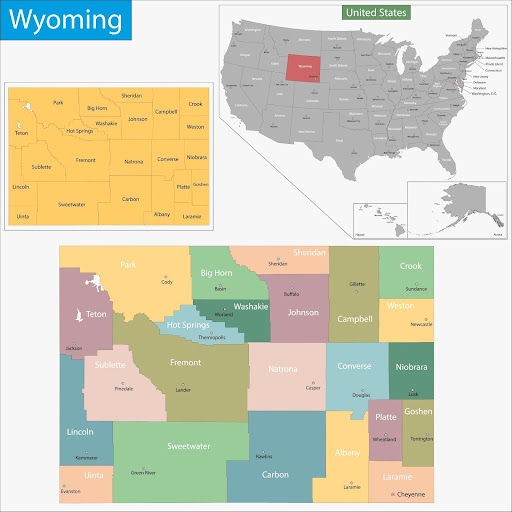Table of Contents
Alabama's diverse landscapes offer more than scenic variety. They create a complex, often unpredictable fire environment shaped by shifting fuels, variable humidity, and mixed land ownership.
For fire investigators, this variability demands a nuanced understanding of regional fire behavior, local suppression tactics, resource availability, and interagency coordination protocols.
This guide provides a deep, practical overview of Alabama's wildland firefighting infrastructure, with detailed insights into seasonal risk patterns, agency roles, training networks, response systems, and how to access real-time data when every second counts.
Live Incident Updates & Maps
When active fire behavior is unfolding, timing is everything. Investigators, ICs, and public safety partners all rely on accurate, real-time data to make decisions and coordinate responses. Monitor wildfire activity across Alabama with this live incident tracker.
State Overview
Alabama’s geography is as complex as its fire behavior. The state spans five physiographic regions, from the Cumberland Plateau in the north to the Gulf Coastal Plain in the south, each presenting distinct wildland fire challenges.
In the north, steep slopes, mixed hardwood forests, and shallow soils affect both suppression access and fire spread patterns. Central Alabama is dominated by the Piedmont and Upper Coastal Plain, where pine plantations and transitional hardwoods serve as recurring ignition zones, especially during drought. Down south, flat terrain and sandy soils combined with longleaf pine ecosystems create ideal conditions for fast-moving surface fires.
According to the Southern Wildfire Risk Assessment, much of central and southern Alabama falls within moderate to high wildfire risk zones, particularly where fragmented forests border agricultural or exurban development. Fire spread potential is elevated in areas with poor road access, heavy fuel loads, and limited suppression infrastructure. These zones are often flagged for increased patrols during red flag warnings or drought declarations.
The Alabama Forestry Commission (AFC) integrates this risk data into its resource deployment and mitigation strategy, especially during seasonal spikes in ignition activity.
Wildfire Season Timeline
Unlike western states with a single long fire season, Alabama faces two distinct wildfire peaks, each driven by different meteorological and ecological factors:
- Spring Season (February–May): This is Alabama’s most active fire period. Following winter’s dormancy, cured grasses and leaf litter create volatile surface fuels. Low humidity and gusty winds—often tied to frontal systems—make this a high-risk period for escaped debris burns and agricultural fires. Most fire departments and AFC units operate at elevated readiness from mid-February through late April.
- Fall Season (October–December): Leaf drop and extended dry spells prime the landscape for ignition. Fires during this period tend to move through leaf litter and ladder fuels, especially in upland hardwood areas. Lightning is rare in fall, so most fires are human-caused, either intentional or accidental.
Recent data underscores the severity of the spring fire season. Between January 1 and April 30, 2025, Alabama recorded 1,122 wildfires.
For fire investigators, knowing these seasonal patterns is essential for contextualizing cause and origin. For instance, a March ignition near an ag field may suggest a burn escape, while a November ignition near hunting land might point toward debris burning or equipment use.
Key State Agencies Involved
Wildland fire response in Alabama is a collaborative effort involving state, federal, and local entities, each with clearly defined responsibilities but increasingly interoperable roles. As an investigator, your coordination with these entities will often dictate the speed and integrity of your findings.
- Alabama Forestry Commission (AFC): The lead state agency for wildland fire management. AFC oversees fire detection, suppression, burn permitting, fire investigations, and public education. They operate a tiered district system supported by dispatch centers and specialized suppression modules (including dozer units and Type 6 engines). Investigators often collaborate with AFC on scene security, cause determination, and evidence preservation. (Website)
- Alabama Fire College (AFC): Not to be confused with the Forestry Commission, this institution provides NWCG-compliant training and certification for wildland and structural firefighters. It plays a key role in workforce development, offering the S-130/S-190/L-180 series, FI-210, and advanced fire behavior courses. The college is a valuable partner for investigators needing refresher training or looking to onboard new talent.
- U.S. Forest Service (USFS): Alabama is home to four national forests, Bankhead, Conecuh, Talladega, and Tuskegee, managed by the USFS under the U.S. Department of Agriculture. On USFS land, fires are investigated under federal protocols and may involve FIRECAUSE documentation standards. Coordination with federal law enforcement (e.g., USFS LEOs) is mandatory in criminal investigations or when the fire crosses jurisdictional boundaries. USFS also manages prescribed burns and fuels treatment programs that investigators may reference when reviewing recent activity near an ignition source.
Local Wildland Firefighting Resources
Effective fire investigation starts with understanding who responded, how fast, and with what resources. In Alabama, wildland fire response is carried out by a layered network of agencies working across jurisdictional lines. Investigators must often coordinate with more than one entity to reconstruct suppression activity, access incident reports, or validate ignition timelines.
Here’s a breakdown of the primary response organizations you’re likely to encounter across the state:
List of Local/State/Federal Fire Response Agencies
Alabama's firefighting infrastructure comprises a network of local, state, and federal agencies:
Contact Numbers and Emergency Links
Training & Volunteering
Thinking about volunteering? Alabama has a number of training centers where you can learn more about wildfire origin and cause, fire behavior, and safety. There are also a number of volunteering opportunities available statewide.
NWCG-Approved Academies and Centers
The Alabama Fire College, based in Tuscaloosa, is the state’s principal hub for wildland fire training. It offers NWCG-certified coursework that aligns with federal position qualifications and supports credentialing for both entry-level and experienced personnel.
Key course offerings include:
- S-130/S-190/L-180 Basic Wildland Firefighter & Introduction to Fire Behavior & Human Factors in the Wildland Fire Service:
This foundational series is required for all wildland firefighting personnel under PMS 310-1. It covers fireline safety, equipment usage, fire behavior prediction, and team leadership in suppression environments. Most courses combine online modules with hands-on field components, including live burn simulations and tool deployment exercises. - FI-210 – Wildland Fire Origin & Cause Determination:
Though offered less frequently, this course is essential for personnel aiming to qualify as NWCG INVF (Fire Investigator). It covers legal considerations, scene examination protocols, evidence handling, and documentation in accordance with NWCG G-09 guidance.
Additionally, the Solon Dixon Forestry Education Center in Andalusia provides hands-on training in fire management.
Volunteer and Seasonal Training Opportunities
The AFC offers training for volunteer firefighters through its Volunteer Fire Department Assistance Program, which includes both classroom and self-study options. Many VFDs also receive field mentoring from AFC wildland crews during joint operations, especially during prescribed burns or Red Flag events. For fire investigators, these departments often hold critical local knowledge and are frequently first on the scene, making their training level and reporting accuracy highly relevant.
Alabama A&M University's FireDawgs program offers students paid training and certifications in wildland firefighting, aiming to increase minority participation in fire management. FireDawgs graduates are now entering both state and federal wildland firefighting ranks. As a fire investigator, you may increasingly encounter these well-trained, early-career personnel on IA crews, Rx burn details, or shadowing positions on Type 3 and 4 incidents.
Stay Updated About Alabama’s Wildland Fire Landscape
Alabama may not top the national wildfire headlines, but its fire environment is anything but simple. Its dual-season fire cycle, diverse topography, and interwoven state-federal response structure demand a level of awareness that goes beyond basic suppression knowledge. For fire investigators, that means understanding not just how fires behave, but how Alabama fights them.
From the Alabama Forestry Commission’s dispatch protocols to the NWCG-aligned training offered by the Alabama Fire College, every element of this system shapes how fires are reported, managed, and examined after containment. Volunteer departments still carry the initial-attack load in much of the state, and programs like FireDawgs are bringing new, diverse talent into the field with real credentials and practical field hours.
FAQs
How to Report a Wildfire in Alabama?
If you spot a wildfire, immediately call 911. Additionally, you can report fires to the Alabama Forestry Commission at 1-800-392-5679. Prompt reporting is crucial for rapid response and containment.
Can I Do a Controlled Burn in Alabama?
Yes, but with regulations. Before conducting a controlled burn, you must obtain a burn permit from the Alabama Forestry Commission. Permits are typically required for burns exceeding one-quarter acre. Contact your local AFC office or visit forestry.alabama.gov for more information.










